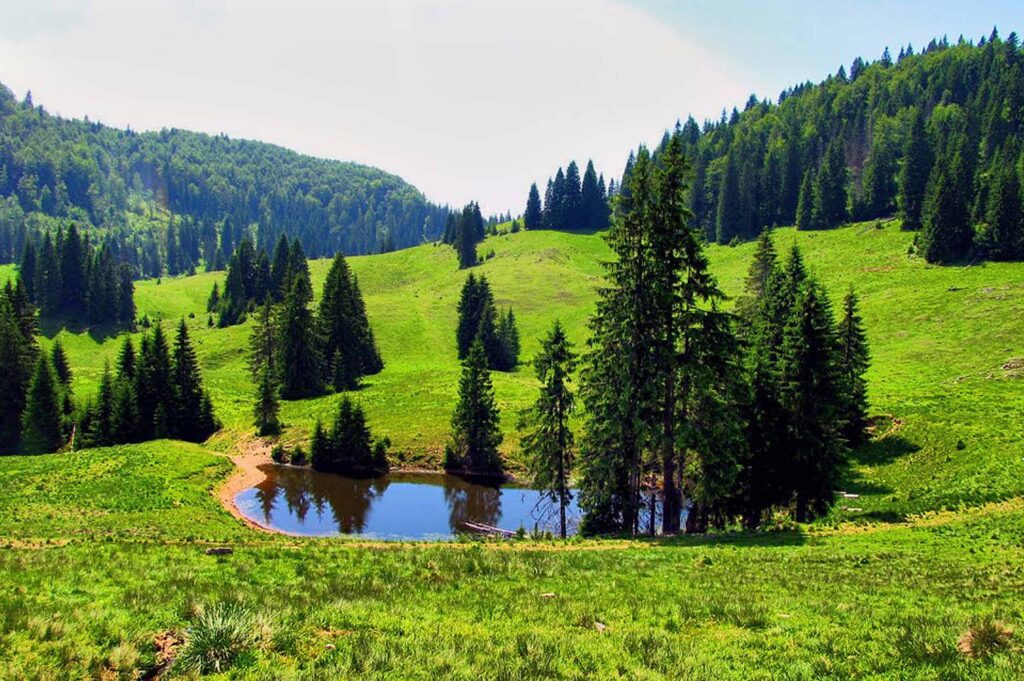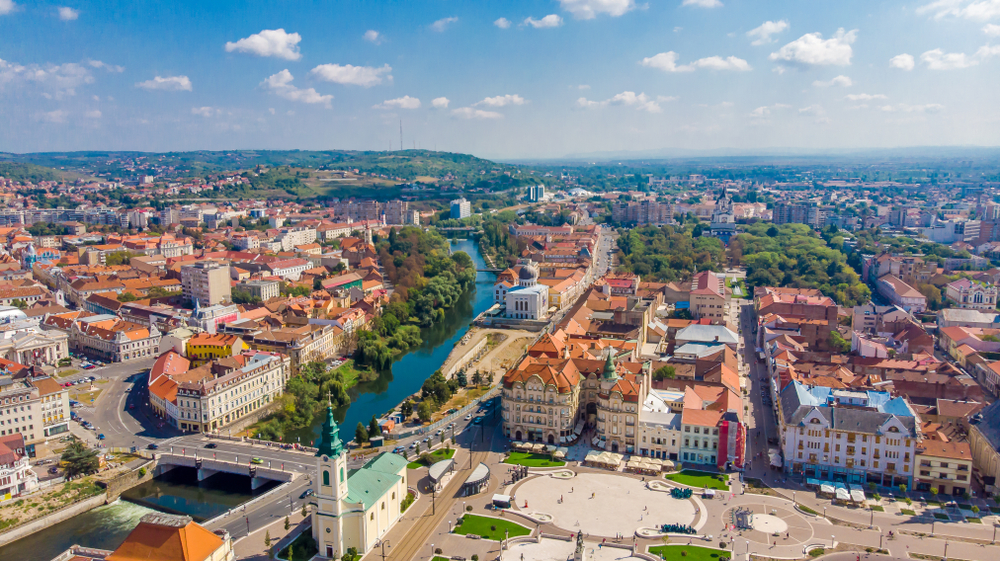Norbert Bántó, the former director of the Bihar (Bihor in Romanian) County Tourism Agency, is optimistic about 2021, as he believes that tourism cannot get any worse — 2020 was rock-bottom for this sector. Hungarian news portal, Maszol.ro, interviewed Bántó, who led the county agency until mid-December but lost his job due to the cutbacks ordered by the leadership of the new County Council. The expert’s optimism is overshadowed by the fact that there are already signs showing that Hungarian projects will be pushed into the background under this new leadership.
When asked about the accommodation possibilities of Bihar County, Norbert Bántó said that this county ranks high nationally: It ranks 7th in the country per number of accommodation places, 8th by the number of guests and 4th per number of guest nights. “In numbers, it means that before the epidemic, the county had around 14,500 accommodation places and approximately 500,000 guests visited the area in a year. The record was measured in 2018 and 2019, when 540,000 to 550,000 people came here and the number of guest nights reached 1.3 million to 1.4 million, meaning that only Bucharest, Konstanca (Constanța) and Brassó (Brașov) counties outpaced Bihar County, while Bihar ranked higher than Szeben (Sibiu), Temes (Timiș), Kolozs (Cluj) and Prahova. This adds up mostly from the nights spent in Nagyvárad (Oradea) and the neighboring thermal water resorts, Félixfürdő (Băile Felix) and Püspökfürdő (Băile 1 Mai),” the expert said.
However, there are differences between the average stay: While people spent only 1.6 nights on average in Nagyvárad, they spent 4.5 nights at the thermal water resorts, Bántó said, adding that this is a huge step back compared to the data from 2010, when the average was above 7 nights, as tourists came to Félixfürdő for 1, 2 or even 3 weeks of rest and therapy.

According to the representative evaluation of the difficulties of 2020 carried out by the County Tourist Destination Management Agency, the municipalities of Félixfürdő and Váradszentmárton (Sânmartin) are the top destinations in the county based on the number of guest nights, followed by Nagyvárad. “The other settlements are very significantly behind, as there are significantly fewer accommodations available in mountain villages or smaller towns. To give a specific example, while there are about 3,000 beds in Nagyvárad and twice as many in the neighboring village of Szentmárton, there are only about 150 accommodations in Nagyszalonta (Salonta), the second-largest city in the county, and about 250 accommodations in Margitta (Marghita),” Bántó explained.
The former director also mentioned that the demand for mountain resorts is very high, with people from all around the country – Bucharest and even Konstanca, the farthest county from Bihar – visiting the Apuseni Mountains (Erdélyi-szigethegység in Hungarian or Munții Apuseni in Romanian). People prefer these mountains as they are cheaper and not as crowded as the Prahova Valley, the Sub Carpathians or Southern Carpathians, Bántó explained.

“The mountain rescuers, who are out in the most visited places all season, said that there were more campers on the Glavoj Meadow and the Pádis Plateau this year than in previous years. This is due to the fact that epidemic rules made it more difficult to travel abroad and people chose destinations at home. Also, some people, who would normally not camp were forced to go camping as they could not find any accommodation nearby,” the expert said, adding that the demand for mountain accommodation in the region is slowly growing. “But it is also part of the truth that there is not enough accommodation, and this became clear during the epidemic year as well, because during August and September, the busiest tourist period, people who wanted to visit the mountains for a couple of days were not able to find accommodation for the weekends.”
Norbert Bántó also admitted that there might be a gap between the official and real data: The farther away we are from Nagyvárad, the greater the chance that the hosts will not admit the real number of tourists. As the expert said: In Nagyvárad and the surrounding area, uncontrolled tourism can reach only 10-20 percent of tourism traffic; but 100 kilometers away from the county capital, in the mountains, hosts are more likely to operate accommodation illegally, which can make up 60 or even 70 percent of their traffic. The further lack of official data about tourism is due to the fact that one-day visitors, people who find accommodation with friends or family members are not registered, as they are not considered tourists. In addition, several people find accommodation at illegally operated places, who are also not registered. “Estimates show that the real numbers could be about 20 to 40 percent above the current official numbers. It is impossible to measure this accurately,” the expert explained.

However, the official information shows that 85 percent of people who visit the county are Romanians, while, in terms of the distribution of foreign tourists, Hungary is in first place. Bántó underlined the fact that the real number of tourists is higher, as is the rate of people visiting from Hungary. “According to research carried out on the Pádis Plateau, half of the tourists came from Hungary. But the rate of people coming to the mountains from Poland, the Czech Republic or Slovakia is also high. Italy and Germany also rank high for countries of origin for tourists coming to Bihar County; however, these people visit Nagyvárad for business or work,” Bántó told maszol.ro.
When asked about the current situation of the tourism profession and plans for 2021, Bántó said that most hotel and guesthouse owners are preparing for 2021 with optimism, as “they believe it cannot be worse than it was in 2020.” “I hope that starting in May, it will be possible to travel and organize trips almost as freely as before the epidemic,” he said, adding that a lot of travel agencies have gone bankrupt or closed many of their offices in the past year. “They won’t survive another year like 2020. The smaller business are already lost, the bigger ones were forced to tighten their belts. However, it is interesting that I didn’t hear about a single accommodation, legally operated hotel or guesthouse in Bihar County that went bankrupt,” Bántó pointed out, adding that these hotels and guesthouses struggled but managed to survive.

Bántó also spoke about the projects of the county tourism agency that targeted the Hungarian community – maps, flyers, posters, giant panels and direction signs translated into Hungarian. According to the former director of the agency, the new leadership has promised to continue these projects “but there are already signs that these will be pushed into the background.” For example, Bántó mentioned that while he was the director, the agency ordered maps of the county and of Nagyvárad in three languages: Romanian, English and Hungarian. “At the end of the year, the Romanian and English editions were published, but the Hungarian version was not.
“I found out that the new leadership had stopped the printing of the Hungarian maps,” Bántó said. A similar occurrence happened with the Hungarian maps of the Érmellék (Ținutul Ierului) and Berettyó (Barcău) areas. Bántó ordered these maps only in Hungarian, as these regions are mostly inhabited by Hungarians so are more likely to attract Hungarian tourists. The maps were successful, as the first printing of them in spring were all snapped up at tourist exhibitions and fairs in Debrecen and Budapest. However, the new leadership decided to stop the project. In addition, the new leadership also ended the contract of an external employee who promoted Bihar County in Hungary.
“More and more signs show that attracting tourists from Hungary won’t be a priority for the County Council and Tourism Agency,” Bántó Norbert, former director of the agency, said, concluding his interview for maszol.ro.
Title image: Félixfürdő is one of the most popular tourist destinations in Bihar County. Photo: Facebook/Baile Felix